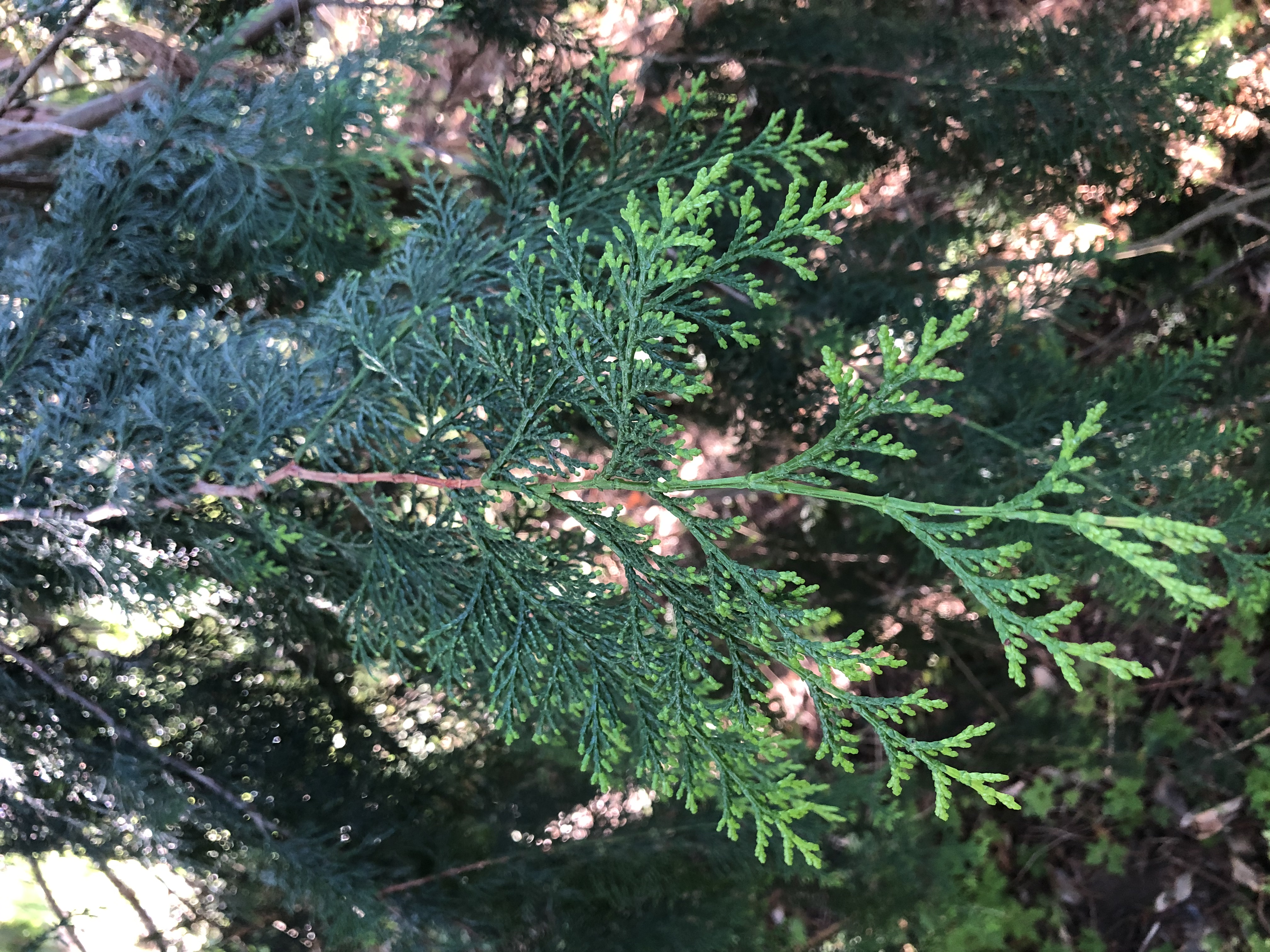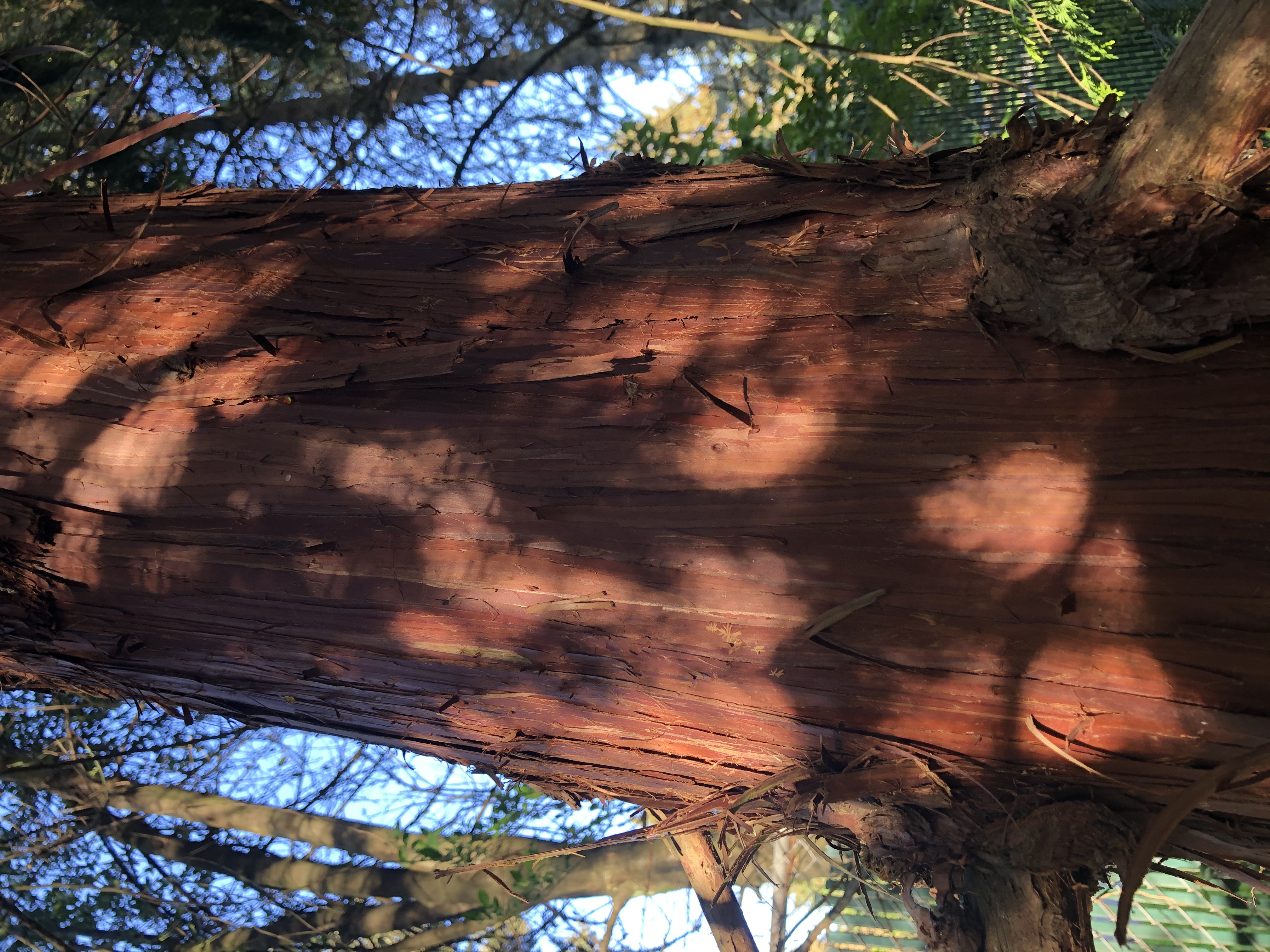Home
›
Cupressaceae
›
Chamaecyparis
›
Chamaecyparis obtusa (Hinoki/Japanese cypress)
obtusa – rounded, in reference to leaves (branchlets) being blunt/rounded at the tips
Native range: Japan & Taiwan
Leaves:
- branchlets are arranged in one horizontal plane
- scales closely appressed, of 2 sizes
- lateral pair much larger 1/12” long
- blunt at apex
- white “Y” markings below (stomata)

Cones:
- monoecious
- males – yellow/orange brown
- females – solitary, greenish-brown
- short stalked, globose cones 1/3–3/8” across
- 8 (10) scales
Other characteristics:
- ultimately 50–75’(to 40 m.) tall to 10’ (3 m.) diameter, 10–20’ (3–6 m.) spread
- bark reddish brown, shedding in strips
- pyramidal shape
- spreading branches with flattened horizontal branchlets that droop at the ends
- branchlets are rounded at the end (obtuse) instead of coming to a point as in Thuja or Chamaecyparis lawsoniana.

Relevant info:
- usually smaller cultivar forms are used in managed landscapes in PNW
- in Japan, hinoki = fire tree
- used to make fire by friction, a practice still employed at Shinto shrines
- one of the ‘Five sacred Trees of Kiso’ in Japan
- historically, very important species used in Japanese architecture
- considered “near threatened” by IUCN due to habitat fragmentation and overexploitation
Ecology & Adaptations:
- native to Southern Japan & Taiwan
- found in temperate mixed Chamaecyparis and broad-leaved mountain forests below 2,800 m., also exposed sites at high elevation
- pollination by wind
- seed dispersal – small “wings” facilitate dispersal by wind
- sexual reproduction & competition:
- wood of downed mature C. obtusa trees are key sites of C. obtusa seedling regeneration
- wood contains salicylic acid, one of several compounds that appear to have an inhibiting (allelopathic) effect on the growth of other tree, shrub and herbaceous species
- vegetative reproduction – may be limited to layering that occurs when trees are felled by wind
- herbivory defense – compounds (terpenes) produced in the tissues inhibit some mammal herbivory (e.g., cervids such as deer) and insect infestation

